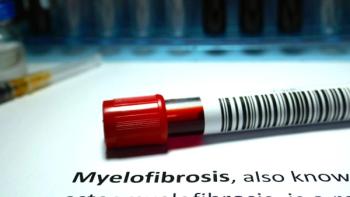
A Background on Myeloproliferative Neoplasms
Experts Rami Komrokji, MD, and Ruben Mesa, MD, define myeloproliferative neoplasms (MPNs) and explain differences between essential thrombocythemia (ET), polycythemia vera (PV), and myelofibrosis (MF).
Episodes in this series

Transcript:
Rami Komrokji, M.D.: Hello, and welcome to this CURE: Expert Connections video series, “The State of Myeloproliferative Neoplasms.” I’m Rami Komrokji, vice chair of the Malignant Hematology Department at Moffitt Cancer Center (Tampa, Florida). I’m joined today by Dr. Ruben Mesa, the director of the UT Health San Antonio MD Anderson Cancer Center and world-renowned MPN (myeloproliferative neoplasm) expert, and a dear colleague. It’s wonderful to have you here, Ruben.
Ruben Mesa, M.D.: Wonderful to be here, Rami. Excited for our discussion.
Rami Komrokji, M.D.: Thank you. To set the stage, I’ll ask you to give us an introduction and to provide an overview of MPNs, or myeloproliferative neoplasms. What are those? What are the categories, diagnoses and symptoms?
Ruben Mesa, M.D.: Well, as we think about the myeloproliferative neoplasms, they are a group of illnesses of the bone marrow. The bone marrow makes all our cells, the red blood cells, the white blood cells and the platelets. Our blood is about half cells and half water. Most of them are red blood cells that carry oxygen from our lungs to the rest of the body. White blood cells fight infections. The platelets help the blood to clot. Now, there’s a whole range of different diseases that can occur in the bone marrow. One group of those are the myeloproliferative neoplasms, which includes essential thrombocythemia, a disease named for having too many platelets, polycythemia vera, a disease named for having too many red blood cells, and myelofibrosis. These are an interrelated group of diseases. We believe what occurs is that in the bone marrow, one of the key genes that is kind of like the operating system on a computer, called JAK2 (Janus kinase 2), is broken, or is mutated. What results is that there is like an on-off switch that’s stuck in the “on” position of overproducing cells. Over time, we’ve learned there are other genes like that that can be abnormal, including calreticulin (CALR) or MPL (proto-oncogene, thrombopoietin receptor). In essential thrombocythemia, or ET, patients have too many platelets, and sometimes they have too many white blood cells, and they might have one of those changes in the genes in JAK2 or in CALR. In polycythemia vera, it’s primarily mutations in JAK2, so there are too many red blood cells, and sometimes too many platelets. In myelofibrosis, the disease is a little different. It can be any one of those mutations. Individuals tend to have a more serious disease. In large spleen, sometimes the bone marrow has scarring and there are not enough blood cells being produced. All of these diseases can be serious. In ET and PV (polycythemia vera), there can be risk of blood clots or bleeding, and definitely symptoms from high blood counts, such as fatigue, night sweats and others. In myelofibrosis, there can be a risk of the disease being life-threatening or fatal. It is a disease that can progress to acute leukemia. It’s a disease that can cause more significant symptoms, including weight loss, fatigue and symptoms from the spleen.
Transcript edited for clarity.








